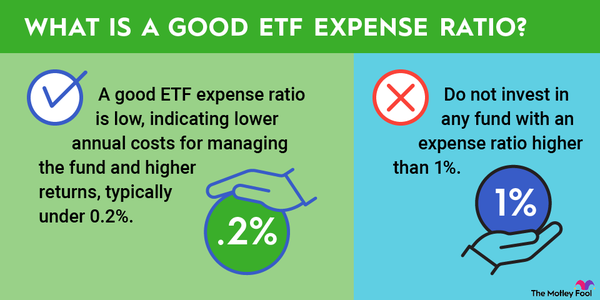Endowment funds are established to benefit a charity, nonprofit, or university. The funds are typically invested to provide income and financial stability for organizations that are heavily dependent on donations.
Let's explore how endowment funds work, including common structures, policies, and key metrics. We'll conclude with an overview of the endowment of Vanderbilt University.

How endowment funds work
How they work
Fundraising organizations invest their donations to create wealth and funding that lasts for generations, if not indefinitely. The invested capital is an endowment fund. Its purpose is to help support the fund's beneficiary, which is usually a nonprofit organization.
Starting capital for endowment funds comes from donations. Properly invested funds produce income and capital appreciation over time so that the beneficiary can receive distributions without depleting the principal.
Income-generating assets held by endowment funds can include public and private equity positions, bonds, cash, real estate, and more. Typically, funds are governed by investment policies that define the acceptable asset types. The parameters of what's acceptable may include risk-adjusted returns, liquidity, industry, or something else. Clean energy charities, for example, would likely prohibit fossil fuel investments in their endowments.
The fund's income supports endowment fund distributions, which the nonprofit uses to fulfill its mission. Withdrawals are usually limited to income only or a small percentage of assets to ensure the fund remains solvent indefinitely.
Some of the largest endowment funds in the U.S. have been solvent for centuries. As an example, the Harvard University endowment, worth roughly $50 billion in fiscal year 2023, was established in the 1630s. Universities and large nonprofits may have many individual endowment funds, each with their own structures and policies. These funds may be invested together in one portfolio and referred to collectively as "the endowment."
Endowment fund structures and policies
Structures and policies
Endowment funds are structured according to how the funds can be used. Four common endowment fund types are:
- Restricted endowments: The donor defines how the investment income can be used. The beneficiary may be limited to withdrawing income only, with no access to the principal.
- Unrestricted endowments: The beneficiary can use the donated funds for any purpose.
- Quasi-endowment: Quasi-endowments are usually established by the board of the nonprofit organization and earmarked for a specific purpose. The initial capital may come from the organization's unrestricted funds. For flexibility purposes, the board may have the right to change or eliminate the spending restrictions on the quasi-endowment fund.
- Term endowment: A term endowment allows the beneficiary to use the principal after a designated date or after a specific milestone or event occurs.
The fund structure is supplemented by policies that define granular rules for managing the fund. Endowment fund policy types include:
- Investment policies: These specify how the funds should be invested in terms of asset type, risk limitations, liquidity requirements, return requirements, etc.
- Withdrawal policies: The beneficiary is usually limited to withdrawing a specific percentage from the fund annually. The goal of the withdrawal limitation is to ensure the fund remains solvent, similar to the role of the 4% rule in retirement investing.
- Usage policies: Usage policies define how withdrawn funds can be used. A university, for example, might have one endowment fund for research and another endowment fund for scholarships.
Key metrics for endowment funds
Key metrics
Key metrics for endowment funds include market value, book value, annual growth rate vs. withdrawal rate, and various donor metrics.
- Market value: Market value is the amount the assets would generate if they were liquidated today.
- Book value: Book value is the total dollar amount used to buy assets. It consists of donations and reinvested income but does not account for appreciation.
- Annual growth vs. withdrawal rate: For an endowment fund to remain solvent indefinitely, the average annual growth rate must be equal to or higher than the withdrawal rate.
- Donor metrics: Permanent funds may require additional donations over time. Donor growth rates, donor acquisition costs, donor retention rates, and donor lifetime value can help nonprofits manage their fundraising efforts so their endowment funds remain healthy.
Related investment topics
Example
Endowment preview: Vanderbilt University
In 1873, Cornelius Vanderbilt donated $1 million to establish a university in Nashville. The gift initiated the school's endowment. Today, Vanderbilt University is one of the top private research schools in the country.
At the end of 2023, Vanderbilt's endowment was worth $9.7 billion. While this sum is spread across more than 3,000 individual funds with varying restrictions, the money is invested and managed collectively. Asset types include global equity, hedge funds, fixed income, venture capital, private equity, natural resources, and real estate.
Vanderbilt withdraws less than 5% of the endowment each year. Endowment distributions fund 23% of the university's operating budget, which includes an active financial aid program. Most undergraduate and graduate students at Vanderbilt receive some level of financial assistance.
The market value of the endowment declined 2% in 2023 after falling 4.4% in 2022. The declines occurred after Vanderbilt's endowment rose from $6.9 billion to $10.9 billion in 2021. The university attributed the increase to greater investing activity, new endowment gifts, and institutional endowments.



















































